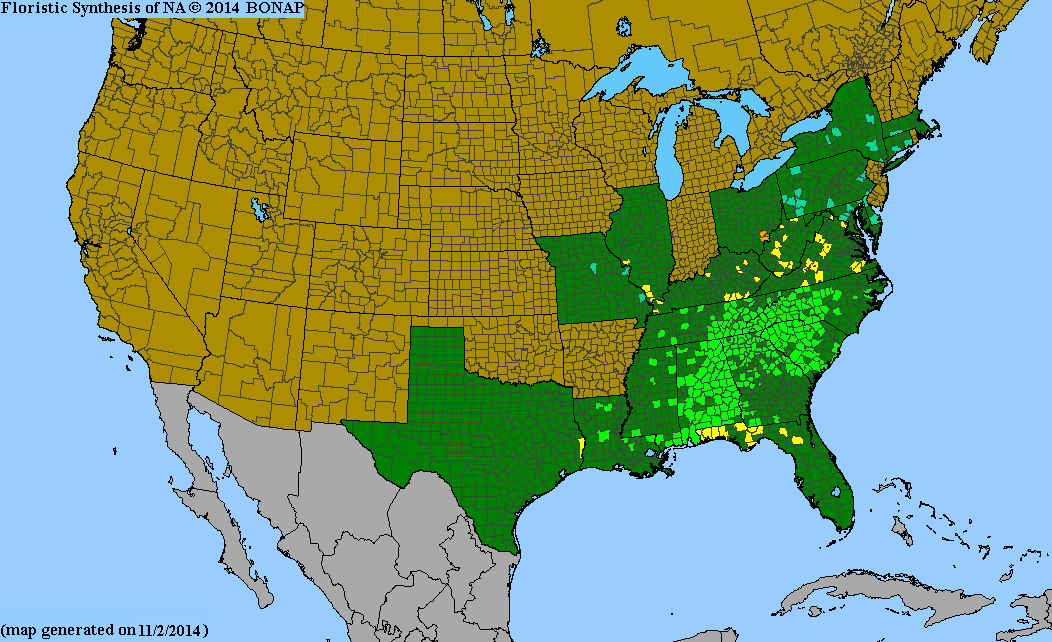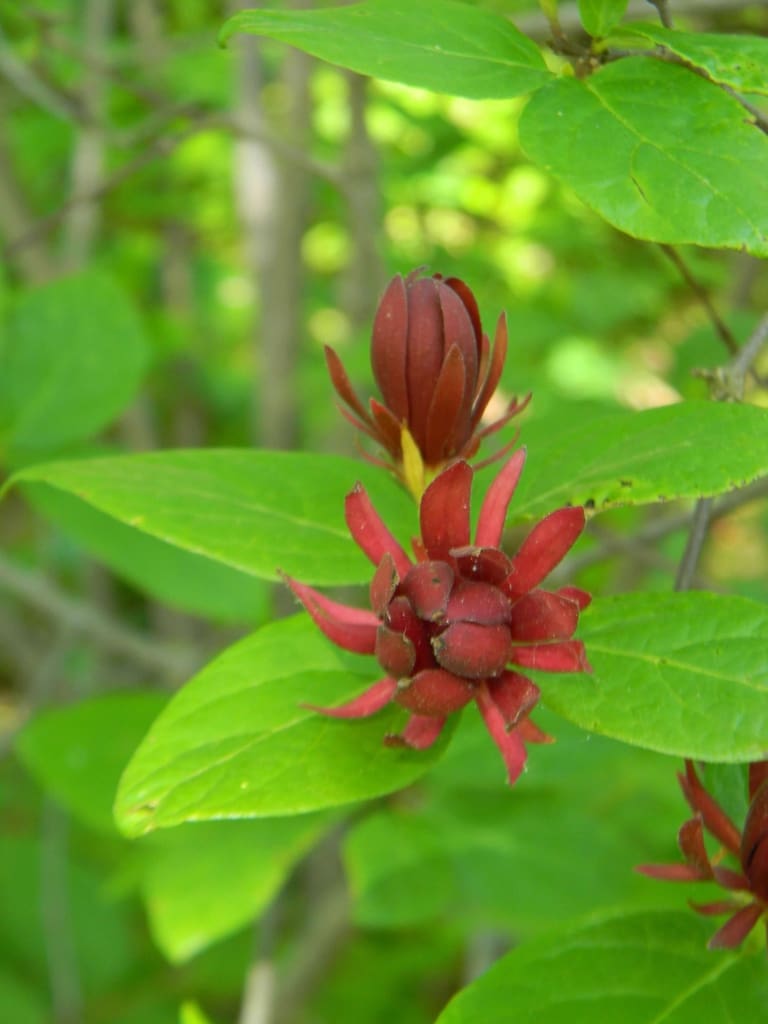Calycanthaceae
sweetshrub
Calycanthus floridus
Synonyms
Buteria florida
Other Common Names
Carolina allspice, spicebush, sweet bubby-bush
Plant Type
Shrub (less than 10 ft)
Life Cycle
Perennial
Typical Size
6-12 ft. tall
6-12 ft. wide
Tolerant of
Occasional Flooding
Inolerant of
Dry Soil
Propagation
By seed
Plant Propagation Notes
Propagate by seed collected in fall to early winter.
Plant Planting Notes
Plant it 3 to 5 feet from other shrubs to give it adequate room to grow.
Plants/Diseases
Relatively pest and disease free.
Wildlife Benefits
Nectar/pollen source for pollinating insects
Leaves
Leaves opposite, blades are elliptic to broadly elliptic or oblong. Leaf size ranges from 5-15 cm long by 2-6 cm wide. Entire leaf margins. Undersides of leaves are paler and are densely hairy.
Flowers
Solitary red/burgundy, saucer shaped flowers with 7-20 petals surrounded by colored sepals. Approximately 1-3 inches diameter. Very fragrant.
Fruit
Urn shaped fruit appear in the summer, turning brown/copper in the fall. Approximately 1 x 1 inch.
Bark
Light brown with lenticels. Fragrant when scratched.
Toxicity
Contains calycanthin and related alkaloids. Toxicity is low, but seeds can cause convulsions and elevated blood pressure if ingested. No contact dermatitis.

USDA Hardiness Zones
4, 5, 6, 7, 8, 9
Light Exposure
Full Sun, Part Sun/Shade, Full Shade
Soil Moisture
Medium, Moist
Soil Drainage
Well-drained
Soil pH
Neutral (6.0-8.0)
Native in South Carolina?
Yes
Plant Native Habitat
Wood openings/edges, stream banks, and moist hillsides
Global Conservation Status (NatureServe)
Secure (G5)
Federal Conservation Status (USFWS)
Not Listed
Distribution Notes
Common in the SC Mountains and Piedmont, and Uncommon in the Coastal Plain

